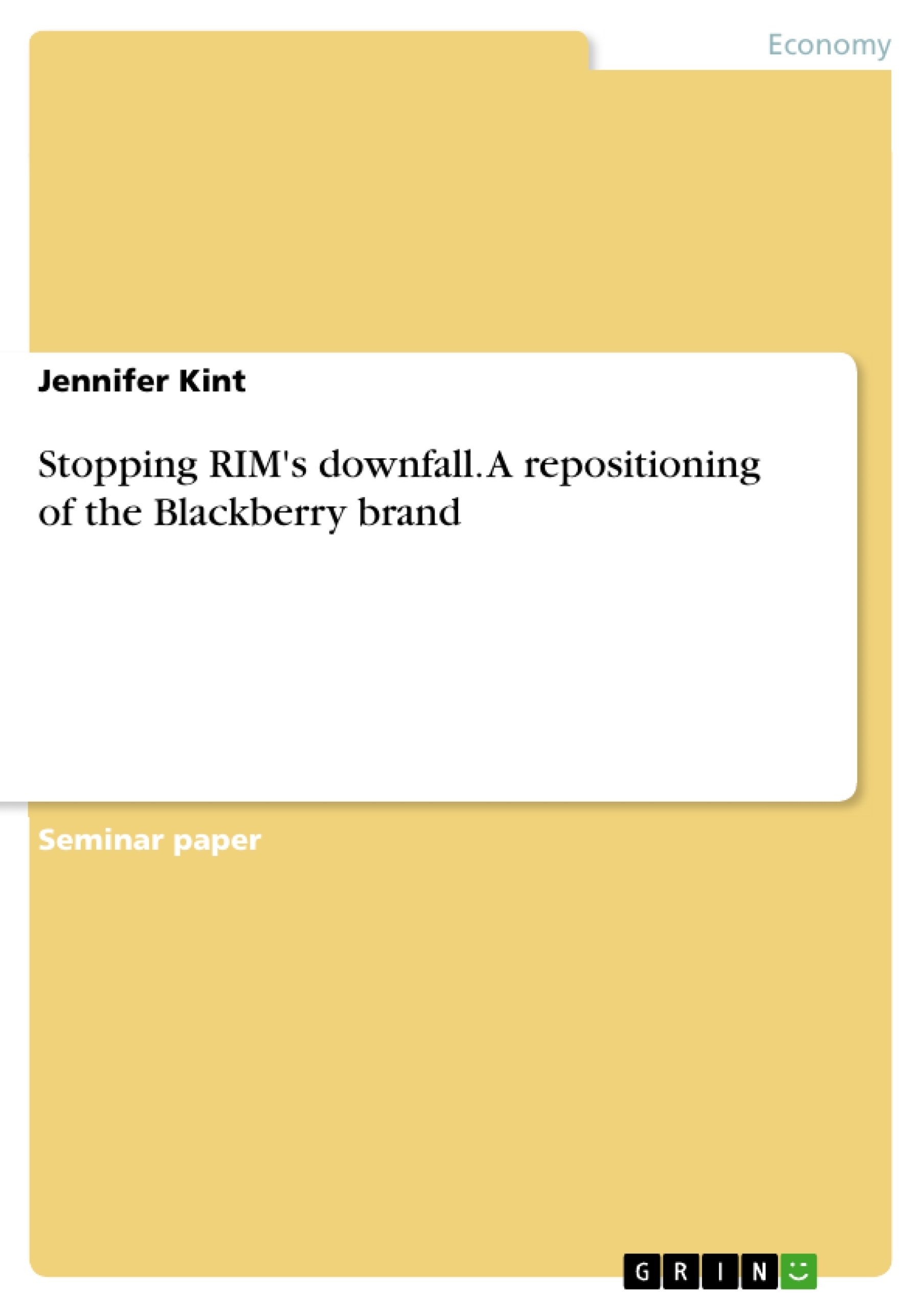In the last few years, the market share of RIM has continued to decrease and the low revenues have pushed its stock to a new seven-year low, raising questions about the company’s ability to survive against its relentless competitors such as Apple’s iPhone or Google’s Android who have clearly taken over the leadership of the smartphone market. Without a significant management and strategy change, Blackberry will not be able to regain old power and to lose its current image of being untrendy and out-of-date. Having examined in detail the causes of Blackberry’s downfall of popularity, this report aims to show opportunities for RIM to increase market share again by adopting and implementing a different brand positioning strategy.
Table of Contents
- Introduction
- Analysis of the brand
- Ideology
- Capability
- Consumer
- Environment
- S.W.O.T. Analysis
- Current Positioning
- Strategic future positioning options
- Implementation Strategies
- Internal Brand Management
- New Product Development
- Corporate Social Responsibility
- Marketing Communications Mix
- Conclusion
Objectives and Key Themes
This report analyzes the decline of the Blackberry brand and its potential for regaining market share. It aims to identify opportunities for Research in Motion (RIM) to reposition the brand and increase its competitiveness in the smartphone market.
- Analysis of the Blackberry brand's strengths, weaknesses, opportunities, and threats.
- Examination of the brand's ideology, capability, consumer perception, and environmental factors.
- Exploration of strategic positioning options to revitalize the Blackberry brand.
- Discussion of implementation strategies including internal brand management, new product development, corporate social responsibility, and marketing communications.
Chapter Summaries
The first chapter introduces the report, providing context for the decline of the Blackberry brand and highlighting the need for repositioning.
Chapter 2 analyzes the Blackberry brand through Edward's and Day's passion point model. It examines the internal factors of ideology and capability, as well as the external factors of consumer and environment. This analysis includes a SWOT analysis to identify strengths, weaknesses, opportunities, and threats.
Chapter 3 discusses current positioning of the Blackberry brand.
Chapter 4 explores potential strategic future positioning options for the Blackberry brand.
Chapter 5 outlines the implementation strategies for repositioning the Blackberry brand, focusing on internal brand management, new product development, corporate social responsibility, and marketing communications.
Keywords
The report focuses on the Blackberry brand, its decline, and its potential for repositioning. Key topics include brand analysis, SWOT analysis, strategic positioning, implementation strategies, and the smartphone market. Specific concepts include ideology, capability, consumer perception, and environmental factors.
- Quote paper
- B.A. Jennifer Kint (Author), 2012, Stopping RIM's downfall. A repositioning of the Blackberry brand, Munich, GRIN Verlag, https://www.grin.com/document/273847



